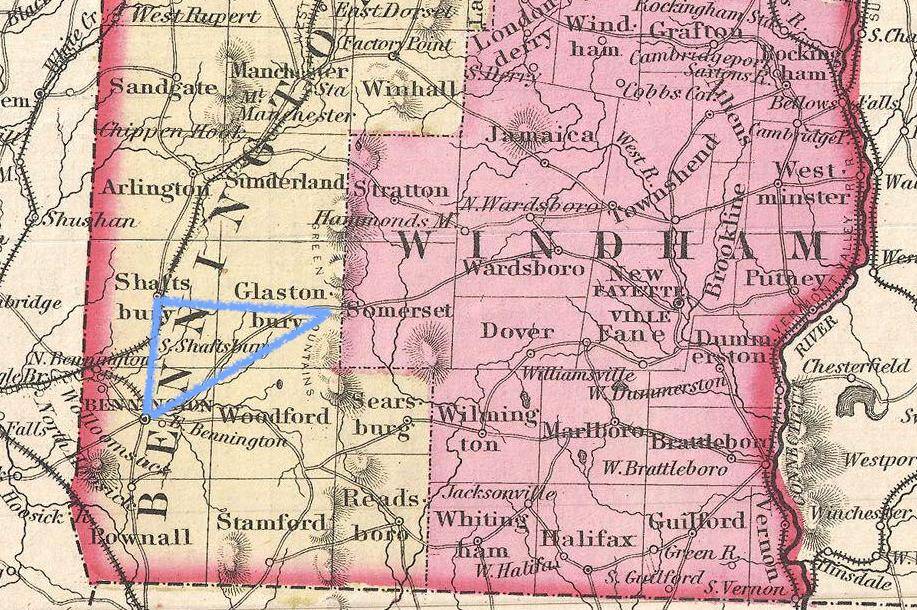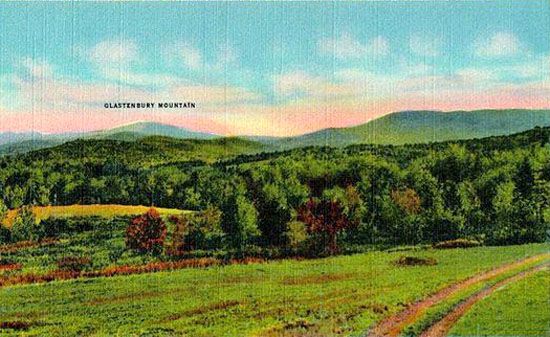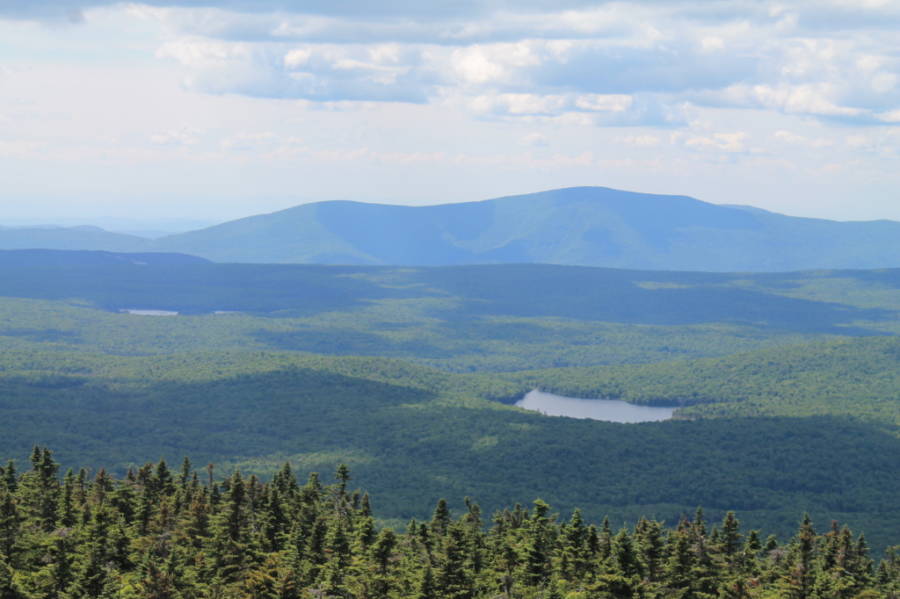
The Unsettling Silence of the Bennington Triangle: Vermont’s Enduring Mystery
In the rugged, verdant embrace of Vermont’s southern wilderness, where the Green Mountains rise in ancient, forested swells, lies a region shrouded in an enduring and chilling mystery. It is known as the Bennington Triangle, a loosely defined area encompassing Glastenbury Mountain and its surrounding communities, from which at least five individuals vanished without a trace between 1945 and 1950. The disappearances, varied in circumstance yet eerily consistent in their lack of explanation, have spawned decades of speculation, from the mundane to the truly bizarre, cementing the region’s place in the annals of American folklore and the paranormal.
The term "Bennington Triangle" was popularized by New England author and folklorist Joseph A. Citro, who meticulously documented the strange occurrences in his books. While the exact geographical boundaries remain fluid, the core of the enigma centers around Glastenbury Mountain, a peak with a long history of being regarded as a place of uneasy energy by indigenous peoples. Abenaki legends speak of "hungry ground" and a "man-eating stone" on the mountain, places to be avoided, where individuals could simply step into another realm, never to return. This ancient foreboding would, decades later, seem to manifest with a terrifying modern resonance.
The series of unexplained disappearances began in 1945, initiating a five-year period that would etch the Bennington Triangle into the collective consciousness of mystery enthusiasts. What makes these cases particularly unsettling is not just the absence of the victims, but the sheer lack of any discernible evidence, the utter void left behind.

The Disappearance of Paula Jean Welden (December 1, 1946)
Perhaps the most famous and widely publicized case is that of Paula Jean Welden, a vibrant 18-year-old sophomore at Bennington College. On Sunday, December 1, 1946, Welden, known for her adventurous spirit, decided to take a hike on the Long Trail, a scenic footpath that traverses the spine of the Green Mountains and passes near Glastenbury Mountain. She informed her roommate she intended to walk a portion of the trail and return by nightfall. She was last seen by a local restaurant owner and a small group of other hikers near the Fayville Road entrance to the trail, walking northward.
Welden was wearing a red parka, jeans, and sneakers – attire not entirely suitable for the increasingly cold and potentially snowy conditions of a Vermont winter evening. When she failed to return, a massive search effort was launched, involving hundreds of volunteers, local police, state troopers, and even the FBI. Dogs, planes, and experienced woodsmen scoured every inch of the rugged terrain. The search was extensive, covering miles of dense forest, steep ravines, and hidden crevices. Yet, despite the unprecedented scale and determination, not a single trace of Paula Jean Welden was ever found. No footprints, no discarded clothing, no broken branches, no signs of a struggle. It was as if she had simply vanished into thin air, leaving behind an agonizing void for her family and a perplexing puzzle for investigators.
The Vanishing of Middie Rivers (November 12, 1945)
Nearly a year before Welden’s disappearance, an equally baffling incident occurred. Middie Rivers, a 74-year-old experienced hunter and woodsman, was leading a group of four other hunters up Glastenbury Mountain on November 12, 1945. Rivers was intimately familiar with the area, having spent his life navigating its forests. On their return journey, the group reached a point where they had to cross a stream. Rivers, who was lagging slightly behind, reportedly told his companions he would catch up. When the others reached their vehicles, Rivers was nowhere to be seen.
Alarmed, they retraced their steps, but Rivers had vanished. Again, an exhaustive search was mounted. Despite his age, Rivers was hardy and known for his resilience in the wilderness. Yet, like Welden, no trace was ever found. No sign of a fall, no evidence of an animal attack, no body. He simply ceased to exist, swallowed by the mountain he knew so well.
The Perplexing Case of James Tetford (December 1, 1949)
The Bennington Triangle’s mysteries took an even stranger turn with the disappearance of James Tetford, a 68-year-old veteran returning home from a visit to relatives in St. Albans, Vermont, to his home at the Bennington Soldiers’ Home. On December 1, 1949, precisely three years to the day after Paula Welden vanished, Tetford boarded a public bus. Witnesses, including the bus driver and other passengers, saw him on the bus at the last stop before Bennington. However, when the bus arrived in Bennington, Tetford was gone.

His luggage remained on the rack, and his money was still in his seat. The bus was thoroughly searched, but Tetford was nowhere to be found. The windows were closed, and there was no way he could have exited the moving vehicle unnoticed. It was as if he had dematerialized from a confined space, a feat that defied all logic and physical possibility. His disappearance remains one of the most inexplicable aspects of the Bennington Triangle phenomenon.
Frieda Langer’s Mysterious Discovery (October 28, 1950)
Less than a year after Tetford’s inexplicable vanishing, Frieda Langer, a 53-year-old woman, was hiking with her cousin near Somerset Reservoir, also within the Bennington Triangle area, on October 28, 1950. During their walk, Langer slipped and fell into a stream. She decided to return to their campsite to change her wet clothes, telling her cousin she would be back shortly. Her cousin waited, but Langer never reappeared.
A search was immediately launched, involving hundreds of people over several days, covering the exact same ground that Langer would have taken. Despite the thoroughness, no trace of her was found. The case seemed destined to join the ranks of the other inexplicable disappearances. However, nearly seven months later, on May 12, 1951, Langer’s decomposed body was discovered in an area that had been extensively searched multiple times.
The discovery only deepened the mystery. How could her body have been missed by so many searchers, including those with dogs, in a previously scoured location? The state of decomposition made it impossible to determine a cause of death, leaving investigators with more questions than answers. The fact that her body was found in a previously searched area is a detail that fuels many of the more outlandish theories about the Bennington Triangle.
The Final Case: Paul Jephson (October 12, 1950)
Just two weeks before Frieda Langer vanished, 8-year-old Paul Jephson disappeared from the same general area. On October 12, 1950, Jephson was accompanying his mother, who was working at a quarry near the Long Trail. His mother left him playing near a pile of rocks for a short time. When she returned, Paul was gone. A small boy, familiar with the immediate area, simply vanished.
Despite an immediate and comprehensive search, involving the same intensity as the other cases, Paul Jephson was never found. No clues, no evidence, just another person swallowed by the seemingly insatiable wilderness of the Bennington Triangle.
Common Threads and Unanswered Questions
The Bennington Triangle disappearances share several unsettling commonalities:
- No Trace: In most cases, absolutely no physical evidence was ever found – no bodies, no clothing, no struggle.
- Varied Demographics: The victims ranged in age from 8 to 74, male and female, experienced woodsmen and college students. This rules out simple predatory behavior or a specific target.
- Extensive Searches: Every disappearance triggered massive, well-organized search efforts that yielded nothing.
- The Langer Anomaly: Frieda Langer’s body being found in an already-searched area is a particularly baffling detail that defies logical explanation.
- Proximity to Glastenbury Mountain: All disappearances occurred in or around the immediate vicinity of Glastenbury Mountain, lending credence to the idea of a localized phenomenon.
Theories and Speculation
With conventional explanations failing, the void has been filled with a plethora of theories, ranging from the mundane to the truly extraordinary.
Mundane Explanations:
- Harsh Environment: The Glastenbury wilderness is unforgiving. Hypothermia, accidental falls into crevices, or getting lost in the dense, disorienting forest are plausible for some. However, the lack of bodies or any evidence in most cases makes this difficult to accept as the sole explanation.
- Animal Attacks: While bears and other predators exist, it’s highly unlikely they could completely remove a human body without leaving any trace, especially in multiple instances.
- Serial Killer: The varying circumstances, ages, and genders make a single serial killer unlikely, especially given the lack of any physical evidence or modus operandi.
Paranormal and Unexplained Theories:
- Native American Legends: Joseph Citro often cited the Abenaki legends of "hungry ground" or "man-eating stone" on Glastenbury Mountain. These legends suggest the land itself possesses a malevolent or otherworldly quality, capable of consuming those who trespass. The idea of an "energy vortex" or a portal to another dimension is a popular extension of this.
- UFOs/Aliens: Some speculate that extraterrestrial beings are responsible, abducting individuals for unknown purposes. The "no trace" aspect fits this narrative.
- Bigfoot/Cryptids: The idea of an unknown creature inhabiting the remote wilderness and preying on humans has been suggested, though again, the complete disappearance of bodies is a significant hurdle for this theory.
- Ley Lines/Geomagnetic Anomalies: Proponents of this theory suggest that the Bennington Triangle lies at an intersection of powerful energy lines, or experiences unusual geomagnetic disturbances that could cause disorientation, hallucinations, or even create localized spacetime distortions.
The Enduring Legacy
Today, Glastenbury Mountain remains a sparsely populated and wild expanse. While the frenzy of the 1940s has long subsided, the Bennington Triangle continues to captivate the imagination. It stands as a testament to the fact that even in an age of advanced technology and scientific understanding, there are still corners of our world where the veil between the known and the unknown seems incredibly thin.
The unsettling silence that descended upon these five individuals – Welden, Rivers, Tetford, Langer, and Jephson – remains unbroken. Their stories serve as a chilling reminder of the raw, untamed power of nature, and perhaps, of something far more mysterious lurking beneath the ancient, green canopy of Vermont. For those who venture into the deep woods around Glastenbury, the legends of the Bennington Triangle are not just tales, but a spectral whisper carried on the wind, urging caution in a place where people can simply disappear. The mountain keeps its secrets, and in its enduring silence, the mystery of the Bennington Triangle lives on.


